Five Minaret Country Population: 54,000
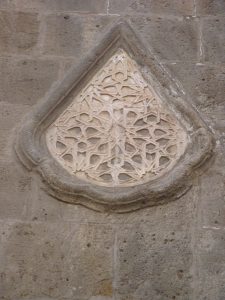 Throughout the 1990s, Bitlis hunkered down in a ravine south-west of Lake Van and glowered at a world that seemed happy to dash past on the busy main road and completely ignore it. Now more settled times in south-eastern Turkey are encouraging a few tourists to wander further off the well-trodden Diyarbakır–Akdamar–Van–Doğubayazıt trail, and Bitlis finally stands poised to reap the benefit of its extraordinary heritage of historic buildings.
Throughout the 1990s, Bitlis hunkered down in a ravine south-west of Lake Van and glowered at a world that seemed happy to dash past on the busy main road and completely ignore it. Now more settled times in south-eastern Turkey are encouraging a few tourists to wander further off the well-trodden Diyarbakır–Akdamar–Van–Doğubayazıt trail, and Bitlis finally stands poised to reap the benefit of its extraordinary heritage of historic buildings.
You may have hard of Mahsun Kırmızıgül’s hit film Five Minarets in New York (New York’te Beş Minare) but for Turks the more famous “beş minare” are those crooned about by Yavuz Bingol and Zülfü Livanelli in the popular folk song Bitlis’te Beş Minare (Five Minarets in Bitlis). The story behind the song is typically tragic. A family had left town, driven out by the Russians who occupied Bitlis at the start of the 20th century. When they finally withdrew, a father sent his son down into the town to see what was left. The son reported that the town had been flattened apart from five minarets. “Five minarets in Bitlis. Come back, my son, come back,” sang the grieving father.
Around town
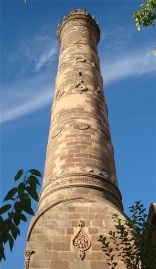 Modern Bitlis is a town that strides defiantly downhill and it’s best to get out of the minibus from Tatvan as soon as you glimpse the first fine old houses (one of them containing a museum although you’ll be lucky to catch it open). Do that and you’ll soon come to the first and arguably finest of the five minarets, attached to the Gökmeydan Cami. Staggeringly beautiful, its column bears tear-like carvings rather like those on the better-known mosques of Mardin, although here the lovely honey-coloured stone of Mardin has been replaced with the rather grimmer grey Ahlat stone from which almost all Bitlis’ older buildings were created. A minaret so breath-taking should by all rights come attached to a mosque of similar beauty, so it’s a little disappointing to step inside and find this one no more than run-of-the-mill.
Modern Bitlis is a town that strides defiantly downhill and it’s best to get out of the minibus from Tatvan as soon as you glimpse the first fine old houses (one of them containing a museum although you’ll be lucky to catch it open). Do that and you’ll soon come to the first and arguably finest of the five minarets, attached to the Gökmeydan Cami. Staggeringly beautiful, its column bears tear-like carvings rather like those on the better-known mosques of Mardin, although here the lovely honey-coloured stone of Mardin has been replaced with the rather grimmer grey Ahlat stone from which almost all Bitlis’ older buildings were created. A minaret so breath-taking should by all rights come attached to a mosque of similar beauty, so it’s a little disappointing to step inside and find this one no more than run-of-the-mill.
No matter, because just a short walk away you will discover the enormous and newly-restored İhlasiye Medrese (seminary), erected in 1589 by Şerefhan V in a style that emulated that of the Selçuks with their imposing portals. The grounds contain the tombs of several 14th and 15th-century dignitaries, about whom next to nothing is known.

From the medrese the road trips down to Lower Bitlis at a precipitous angle, despite which the traffic still pounds past alarmingly. The Rough Guide to Turkey describes Bitlis as “having the feel of an isolated nineteenth-century English mill-town”, a comparison which will strike British visitors as particularly apt, despite the fact that it’s hard to think of any mill town with, at its heart, a castle as imposing as Bitlis’.
This castle stands atop a plug of rock rather like the Rock of Van and is surrounded by almost three km of wall. Sadly, they have been given the now almost predictably harsh makeover calculated to rob them of their beauty. Still, there’s a nice story attached to the castle according to which the original version was built by Beldis, a commander under Alexander the Great. When Alexander returned from one of his Asian jaunts he asked for the keys of the castle, only to be refused. Furious, he laid siege to it but was eventually forced to retreat whereupon Beldis rode out after him, handed over the keys and happily explained to his leader that he had hereby proved the castle to be impregnable. In memory of this episode the town is said to have been named after Beldis.
The surviving walls of the castle belong to a 16th-century Ottoman rebuild. On a visit there in 1655 the Ottoman traveller Evliya Çelebi described the extraordinarily opulent lifestyle of Abdal Khan, the ruler of a semi-independent Kurdish province based in Bitlis. According to Evliya, the Khan’s palace boasted no fewer than 300 rooms while its kitchens were able to serve a visiting entourage of more than 3,000 men. The gardens came in for particular praise as did the bathhouse where rose petals floated in the pool, and the basins came with taps of gold and silver. Unfortunately, a pleasurable first visit during which he was entertained by a bawdy magician was followed a year later by a second visit during which a combination of deep snow and political in-fighting left him a prisoner in the palace for more than three months before he finally managed to escape to Ahlat.
Of the four other minarets thought to be alluded to in the folk song the oldest is the one standing beside the Ulu Cami in the bustling market, a low-slung Selçuk edifice dating back to 1150.
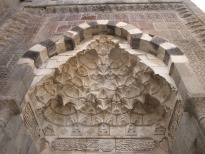 Perhaps Bitlis’ biggest single suprise, though, is the wonderful Şerefiye Cami, a mosque complex dating back to 1529 which was designed as if the Ottomans had never existed and Selçuk architecture was still the height of fashion. Recently restored, it boasts a superbly elaborate stalactite portal, several tombs, a soup kitchen and a seminary all of its own.
Perhaps Bitlis’ biggest single suprise, though, is the wonderful Şerefiye Cami, a mosque complex dating back to 1529 which was designed as if the Ottomans had never existed and Selçuk architecture was still the height of fashion. Recently restored, it boasts a superbly elaborate stalactite portal, several tombs, a soup kitchen and a seminary all of its own.
The last two of the famous five minarets attached to the Kalealtı and Meydan Camis are of less architectural interest. Nevertheless the search for them will take you deep into the heart of old Bitlis where many of the enormous stone-built mansions dating back to the 19th century were once occupied by Armenians, and where there are several other mosques of minor interest including the picturesque Alemdar Cami, set beside a stream, and the so-called Atatürk Cami where Atatürk paused to pray during a visit in 1916.
Wherever you look in Bitlis there are glimpses of the past. The bazaar retains several arched stone gateways that led into what must once have been separate areas divided according to what was on sale – – a rusting sign, for example, just about remembers the old Buğday Pazarı where wheat would once have been sold.
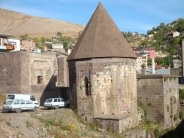 Little hump-backed bridges with steps worn almost to nothing trip across a stream full of rubbish. And in the back streets near the Alendar Cami there are several of the Selçuk-style kümbet tombs that can be seen in Ahlat on the northern shore of Lake Van and further west in Central Anatolian towns like Kayseri and Niğde, as well as the Hatibiye Medresesi which serves as a tourist information office.
Little hump-backed bridges with steps worn almost to nothing trip across a stream full of rubbish. And in the back streets near the Alendar Cami there are several of the Selçuk-style kümbet tombs that can be seen in Ahlat on the northern shore of Lake Van and further west in Central Anatolian towns like Kayseri and Niğde, as well as the Hatibiye Medresesi which serves as a tourist information office.
Given its long isolation, it’s not perhaps surprising that Bitlis still feels tremendously authentic. Many of the residents are members of four huge extended families so that everyone seems to know everybody else.
And this is one of the best places in Eastern Turkey to sample that great delicacy, the büryan kebab, a pit-baked lamb dish that is served on big flaps of pitta bread and is at its best early in the morning. Try it at Meşhur Bitlis Büryancısı and you will be able to inspect the pit in which the lamb is cooked complete with the little dish at the bottom that is used to collect the juices.
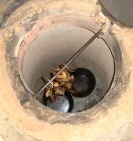 Sleeping
Sleeping
Most people will probably prefer to stay in Tatvan for a better choice of accommodation.
Dideban Oteli, Bitlis. Tel: 0434-226 2820
Şark Mermer Otel, Bitlis. Tel: 0434-228 1166
Transport info
Minibuses run from Tatvan high street to Bitlis every half-hour.
Day trip destinations
Güroymak (hot springs where farmers bathe animals in winter)


